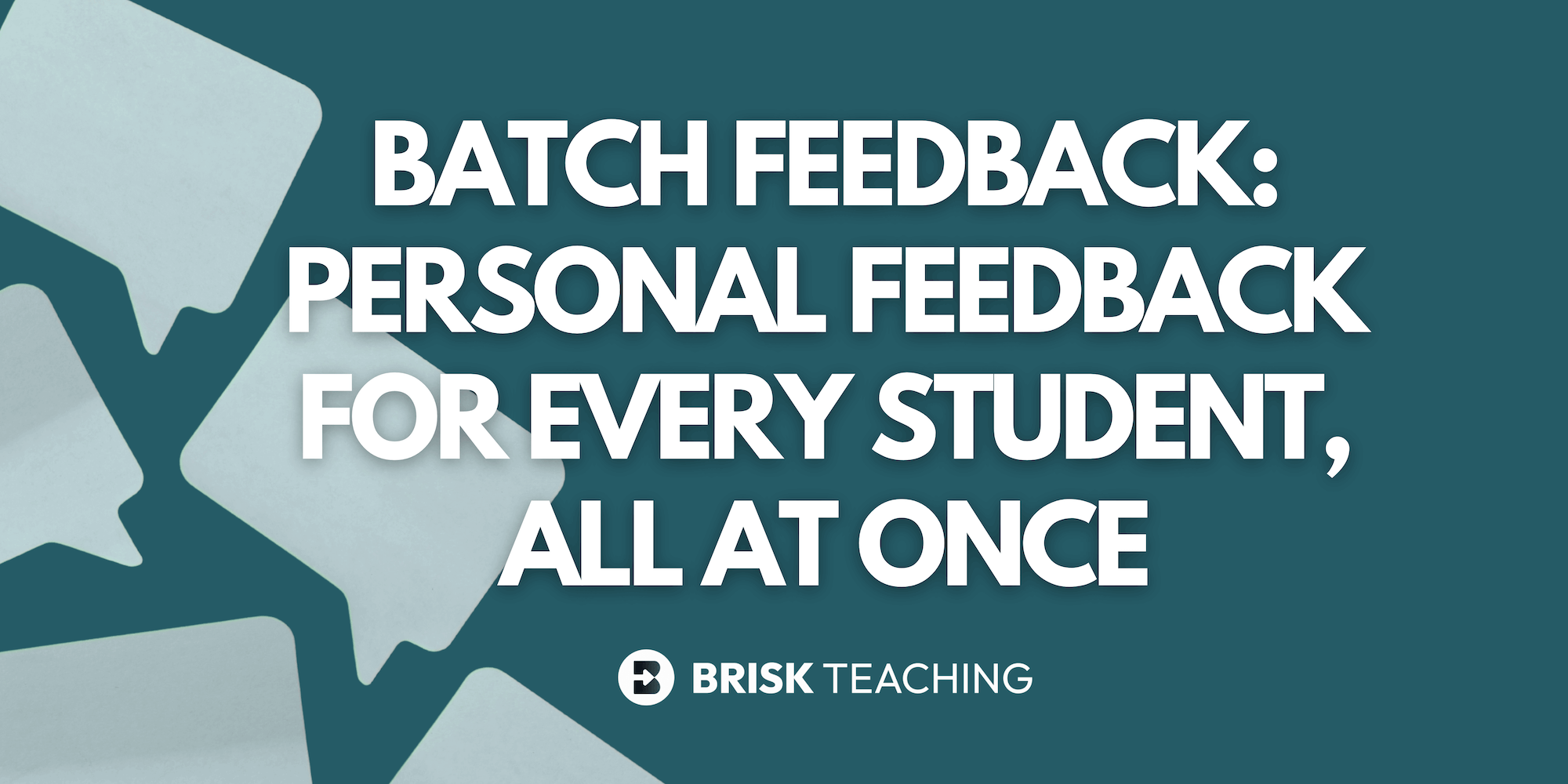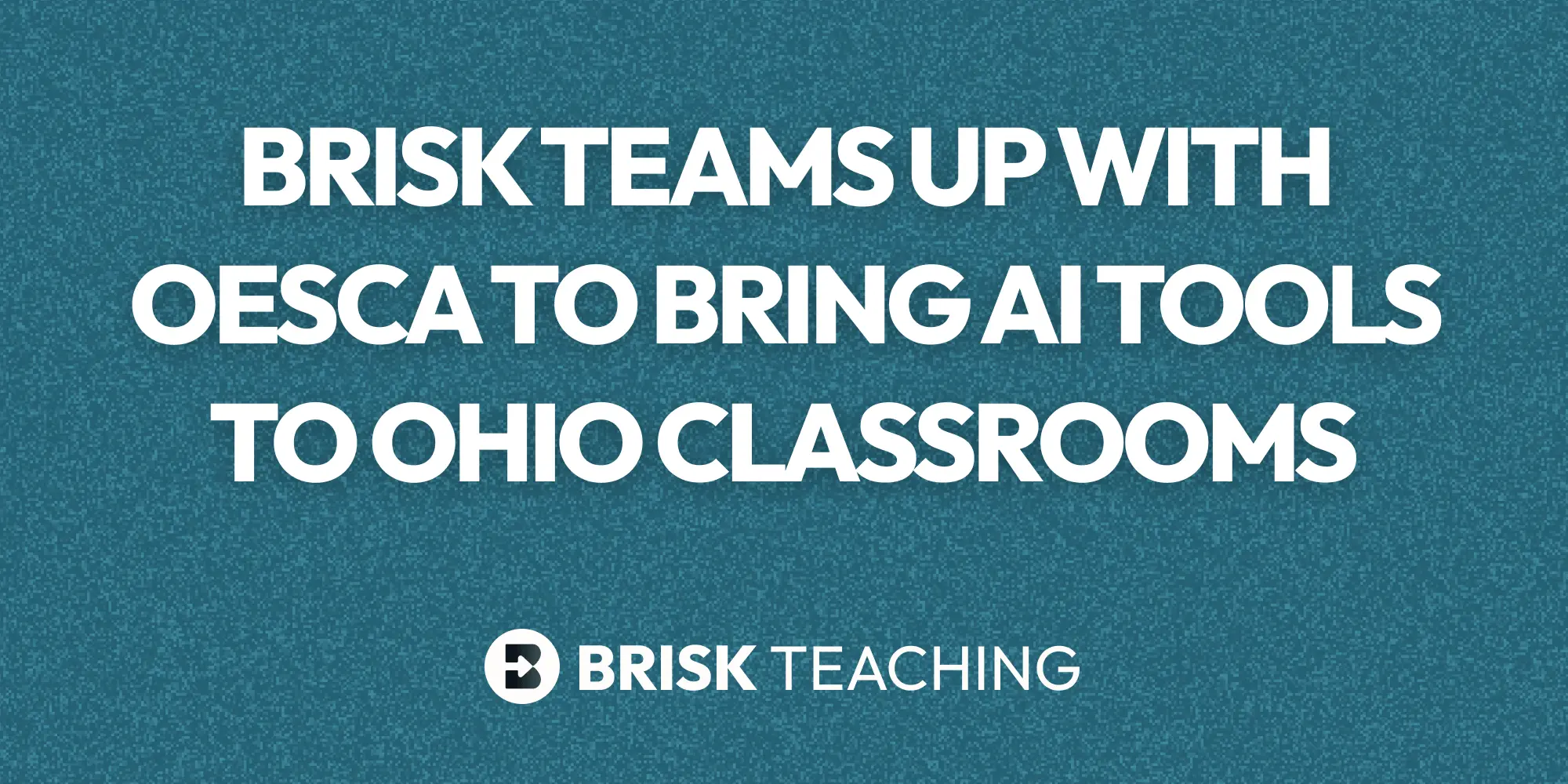Why Letter Identification is an Essential Skill
Letter identification is essential in kindergarten as it forms the foundation for reading and writing. Recognizing letters helps children connect them with sounds, aiding in phonemic awareness, a key skill for decoding words. It also supports early writing, allowing children to form letters and words. As they learn to identify letters, their vocabulary expands, boosting comprehension. Strong letter recognition builds confidence and encourages engagement in literacy activities, setting the stage for future academic success.
Creating a Lesson Plan in 2 Minutes with Brisk: Step-by-Step Guide
Step 1: Install the Brisk Extension and pin Brisk to your browser toolbar.
Step 2: Open up a blank Google Doc and click the Brisk Chrome extension (“B” icon) in the bottom right corner of your screen.
Step 3: Click the ‘Create’ button and then click ‘Lesson Plan’.
Step 4: In the text box, type: “Create a Science of Reading Letter Identification for Kindergartners.”
Step 5: Select the appropriate Grade level and Standard (optional).
Step 6: Click ‘Add-On’ to generate the worksheet.
Lesson Plan: Science of Reading Letter Identification for Kindergartners
Academic Standard
RF.K.3.a Demonstrate basic knowledge of one-to-one letter-sound correspondences by producing the primary sound or many of the most frequent sounds for each consonant.
Lesson Overview
This 50-minute lesson plan focuses on helping kindergarten students identify letters and their corresponding sounds, with an emphasis on consonants. The lesson uses multi-sensory approaches to engage students in learning letter-sound correspondences.
Objectives
By the end of this lesson, students will be able to:
1. Recognize and name at least 5 consonant letters
2. Produce the primary sound for at least 5 consonant letters
3. Match letters to objects that begin with their corresponding sounds
Materials
- Large alphabet cards
- Small individual alphabet cards for each student
- Picture cards of objects beginning with various consonant sounds
- Whiteboard and markers
- Playdough or sand trays
- Letter sound song (e.g., "The Letter Sounds Song" or similar)
Lesson Plan
Introduction (5 minutes)
1. Greet the class and explain that today we'll be learning about letters and the sounds they make.
2. Sing the letter sound song together to energize the students and introduce the concept of letter-sound correspondence.
Letter Recognition Activity (10 minutes)
1. Show large alphabet cards for 5 consonants (e.g., B, M, S, T, R).
2. Ask students to name each letter as you show it.
3. Play a quick game: Hold up a letter card and have students stand up if they think they know the letter name. Choose a student to name the letter.
Letter-Sound Correspondence (15 minutes)
1. Introduce the sound for each of the 5 consonants:
- B: "The letter B makes the /b/ sound, like in 'ball'."
- M: "The letter M makes the /m/ sound, like in 'mouse'."
- S: "The letter S makes the /s/ sound, like in 'snake'."
- T: "The letter T makes the /t/ sound, like in 'table'."
- R: "The letter R makes the /r/ sound, like in 'rabbit'."
2. Practice each sound together as a class.
3. Show picture cards of objects beginning with these sounds and have students match them to the correct letter.
Multi-Sensory Letter Formation (10 minutes)
1. Demonstrate how to form each letter in the air using large arm movements.
2. Have students practice forming the letters in the air, on their desks with their fingers, and in sand trays or with playdough.
3. As they form each letter, encourage them to say the letter name and its sound.
Letter-Sound Matching Game (8 minutes)
1. Divide the class into small groups.
2. Give each group a set of small alphabet cards and picture cards.
3. Have students take turns matching letters to pictures that begin with that letter's sound.
4. Circulate to provide assistance and check for understanding.
Conclusion and Assessment (2 minutes)
1. Review the 5 consonants learned today by showing the large alphabet cards again.
2. Ask students to say the letter name and its sound for each card shown.
Extension Activities
- For advanced students, introduce additional consonants or begin exploring vowel sounds.
- For students needing extra support, provide additional one-on-one practice with letter recognition and sound production.
Assessment
Throughout the lesson, observe students' participation and accuracy in identifying letters and producing their sounds. Note any students who may need additional support or challenge for future lessons.
Remember to keep the pace lively and engaging for kindergartners, using plenty of praise and encouragement throughout the lesson. Adjust the activities as needed based on your students' responses and engagement levels.
Letter-Sound Correspondence Worksheets and Activities for Kindergarten
Academic Standard
RF.K.3.a Demonstrate basic knowledge of one-to-one letter-sound correspondences by producing the primary sound or many of the most frequent sounds for each consonant.
Classwork: Science of Reading Letter Identification for Kindergartners
Worksheet 1: Letter Recognition
Instructions:
Circle the letter you hear when your teacher says its name.
1. B D P R M
2. S C T G F
3. M N W R B
4. T D B P S
5. R B P D S
Worksheet 2: Letter-Sound Matching
Instructions:
Draw a line to match the letter with the picture that starts with its sound.
```
B [Picture of a snake]
M [Picture of a table]
S [Picture of a ball]
T [Picture of a mouse]
R [Picture of a rabbit]
```
Activity 1: Sand Tray Letter Formation
Materials:
- Shallow trays filled with sand
- Letter cards (B, M, S, T, R)
Instructions:
1. Show students a letter card.
2. Ask them to say the letter name and its sound.
3. Have them trace the letter in the sand with their finger.
4. Encourage them to say the letter sound as they form it.
Activity 2: Letter-Sound Sorting Game
Materials:
- Small boxes labeled with B, M, S, T, R
- Small objects or pictures beginning with these sounds
Instructions:
1. Place the labeled boxes in the center.
2. Give each student an object or picture.
3. Ask them to say what their item is and its beginning sound.
4. Have them put the item in the box with the matching letter.
Exit Ticket
Instructions:
For each letter, say its name and sound. Then draw something that starts with that sound.
1. B ___________________________
2. M ___________________________
3. S ___________________________
4. T ___________________________
5. R ___________________________
Remember to praise students for their efforts and provide help when needed. These activities are designed to be fun and interactive while reinforcing letter-sound correspondences for kindergartners.
Use Brisk to Customize This Lesson Plan in Just a Few Clicks
Feeling overwhelmed by the thought of modifying your lesson plans to enhance reading skills using the Science of Reading? Try Brisking it & save time!
Here’s how to modify this lesson plan in seconds:
Step 1: Install the Brisk Extension and pin Brisk to your browser toolbar.
Step 2: File > Make a copy of the lesson plan.
Step 3: Click the Brisk Chrome extension (“B” icon) in the bottom right corner of your screen.
Step 4: Click the ‘Something Else’ button.
Step 5: Type in the text box and ask Brisk to adjust the lesson plan for your students. The more specific you are, the more tailored your lesson plan will be!
Have fun!
.webp)
.webp)






